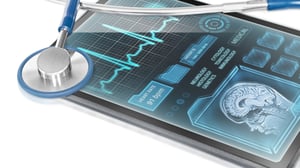
ISO 14971: Medical Device Risk Management Standard
Master ISO 14971 risk management for medical devices. Ensure patient safety, streamline approvals & gain competitive advantage.
ISO 14971 is the international standard for applying risk management to medical devices, providing a systematic framework for identifying, analyzing, and controlling risks throughout the entire product lifecycle. This essential standard enables medical device manufacturers to ensure patient safety while meeting global regulatory requirements, including those for medical device regulation and quality management system compliance.
The rapid evolution of medical technology, including artificial intelligence and machine learning applications, has made robust risk management, including thorough risk analysis, more critical than ever. Organizations worldwide rely on ISO 14971 to navigate complex regulatory landscapes while bringing innovative and safe medical devices to market. This involves manufacturers adhering to both risk analysis and the need to understand associated risks.
Overview of ISO 14971

ISO 14971:2019 establishes a comprehensive risk management process for medical devices, requiring manufacturers to implement systematic approaches to risk identification, evaluation, and control. The standard applies to all medical devices, from simple instruments to complex Software as a Medical Device (SaMD) and AI-enabled medical devices.
The standard emphasizes a lifecycle approach, integrating risk management activities from initial design through post-market surveillance, ensuring continuous monitoring and control as devices evolve and new hazards emerge. This aligns with international organization standards and regulatory requirement harmonization, including meeting european standard expectations.
Importance of Risk Management in Medical Devices
Medical device failures can have catastrophic consequences, making risk management fundamental to patient safety. ISO 14971 provides the framework needed to systematically identify potential hazardous situations and implement appropriate risk control measures.
Beyond safety considerations, effective risk management supports regulatory compliance with frameworks like EU MDR and FDA Guidance, enabling innovation in emerging areas such as ML-enabled medical devices and autonomous systems. Ensuring safety through systematic assessment of the effectiveness of control measures helps maintain product safety and quality management system alignment.
Key Components of ISO 14971
Risk Management Planning
The foundation of ISO 14971 lies in establishing a comprehensive risk management plan that defines roles, responsibilities, and acceptance criteria. This plan must integrate with the organization's quality management system (QMS) and align with ISO 13485:2016 requirements.
Risk Analysis and Evaluation
The standard requires systematic risk analysis using techniques such as Failure Modes and Effects Analysis (FMEA) and Fault Tree Analysis. For medical device software, this includes analyzing potential software failures and their impact on patient safety and associated risks, in correspondence with pri medicinskih pripomockih standards.
Risk Control Measures
When risks exceed acceptable levels, manufacturers must implement control measures following the hierarchy of risk control:
- Inherent safety by design
- Protective measures in the medical device
- Information for safety
Residual Risk Assessment
After implementing control measures, organizations must evaluate residual risks to ensure they remain within acceptable limits. This is particularly important for AI/ML SaMD, where algorithms may behave unpredictably.
Risk Management File (RMF)
The Risk Management File serves as the central repository for all risk management activities, providing traceability and supporting regulatory submissions, and demonstrating compliance with standards like IEC 62304 for medical device software.
Application of ISO 14971 in Software and AI-Driven Innovations
Modern medical devices increasingly incorporate software and AI components, creating new categories of risk that traditional approaches may not address. Specialized consideration of algorithmic risks, data-driven decision-making, and compliance with pri medicinskih pripomockih is needed for effective risk management.
Addressing Bias and Data Quality
AI Risk Management requires careful evaluation of unwanted bias in ML models and ensuring data quality throughout the algorithm training process, including risks related to training the model and ongoing performance monitoring.
Managing Continuous Learning Systems
Machine learning systems that adapt over time present unique challenges for risk management. Organizations must implement Predetermined Change Control Plans and continuous monitoring systems to ensure safety as algorithms evolve.
Integration with Other Standards
ISO 14971 doesn't operate in isolation but integrates with numerous other standards to create comprehensive quality and safety frameworks.
Relationship with IEC 62304
IEC 62304 specifically addresses medical device software lifecycle processes, working in conjunction with ISO 14971 to ensure software safety. These standards complement each other, providing detailed software development requirements and addressing overall risk management, including ustrezni splosni vidiki za medicinske pripomocke.
Alignment with ISO 13485
The ISO 13485 quality management system standard requires risk management activities that align directly with ISO 14971 requirements, ensuring that quality and risk management work together throughout the product lifecycle.
ISO 14971 and Quality Management Systems (QMS)
Design Controls and Risk Management
Design Controls mandated by regulations like FDA 21 CFR Part 820 rely heavily on ISO 14971 risk management processes. The standard provides the framework for design input, design output, and design verification activities. Risk management activities support critical QMS processes, including clinical evaluation, software validation, and post-market surveillance, ensuring quality and safety considerations are embedded throughout the organization.
Regulatory Compliance and ISO 14971
Adapting to Evolving Regulatory Demands
The regulatory landscape for medical devices continues to evolve, with new requirements emerging for AI and software-based devices. Understanding EU AI Act requirements and their interaction with ISO 14971 is crucial for manufacturers developing AI-enabled medical devices. This includes adherence to european union and eec regulatory standards.
Harmonization with International Guidelines
ISO 14971 serves as a harmonized standard recognized by regulatory bodies worldwide, including the U.S. Food & Drug Administration and European competent authorities. This recognition streamlines regulatory submissions and market access by aligning with european standard practices.
Benefits of Implementing ISO 14971
Organizations implementing ISO 14971 experience numerous benefits:
- Enhanced patient safety through systematic risk identification and control
- Streamlined regulatory approvals via a recognized risk management framework
- Improved product quality through lifecycle risk management
- Reduced liability through documented risk assessment and control
- Competitive advantage in markets requiring demonstrated safety
Challenges and Considerations in Implementation
Common implementation challenges include:
- Resource allocation for comprehensive risk management activities
- Staff training on risk management methodologies
- Integration complexity with existing quality systems
- AI-specific risks requiring specialized expertise
- Continuous monitoring of evolving risks
Organizations can address these challenges through strategic planning, executive commitment, and partnership with experienced specialists in AI management systems and international medical device regulations.
Future Developments and Trends in ISO 14971
The standard continues evolving to address emerging technologies and regulatory requirements. Key trends include:
- AI-specific guidance for machine learning medical devices
- Cybersecurity integration addressing data and systems security
- Post-market surveillance enhancements for continuous learning systems
- International harmonization with evolving regulatory frameworks, including tr 24971 standards
Frequently Asked Questions
What is the difference between ISO 14971:2019 and previous versions?
The 2019 version emphasizes post-production information, benefit-risk analysis, and provides clearer guidance on risk acceptability criteria, integrating 14971:2019 foreword iso insights.
How does ISO 14971 apply to AI-enabled medical devices?
AI devices require additional consideration of algorithmic risks, data quality, bias, and continuous learning system behaviors throughout the product lifecycle, detailed in annex zb.
Is ISO 14971 mandatory for medical device manufacturers?
While not legally mandatory, ISO 14971 is referenced by major regulatory bodies and is typically required for market access in key jurisdictions.
How does ISO 14971 integrate with cybersecurity requirements?
The standard addresses cybersecurity risks as part of the overall risk management process, often requiring integration with standards like ISO/IEC 27001.
What documentation is required for ISO 14971 compliance?
Key documentation includes the Risk Management File, risk management plan, hazard analysis, risk assessment records, and post-market surveillance reports, ensuring thorough review and alignment with annex za directives.
Partner with Nemko for ISO 14971 Excellence
Nemko ensures your organization implements robust compliance that meets regulatory requirements while enabling innovation. Our global expertise in medical device risk management, combined with specialized knowledge of AI governance frameworks, positions us to guide your organization through complex regulatory landscapes. We help organizations transform risk management from a compliance burden into a competitive advantage, ensuring patient safety while accelerating time-to-market. Contact our experts today to discuss how ISO 14971 can strengthen your medical device portfolio and regulatory positioning.
Lorem ipsum dolor sit amet
Lorem Ipsum Dolor Sit Amet
Lorem ipsum odor amet, consectetuer adipiscing elit. Elementum condimentum lectus potenti eu duis magna natoque. Vivamus taciti dictumst habitasse egestas tincidunt. In vitae sollicitudin imperdiet dictumst magna.

Lorem Ipsum Dolor Sit Amet
Lorem ipsum odor amet, consectetuer adipiscing elit. Elementum condimentum lectus potenti eu duis magna natoque. Vivamus taciti dictumst habitasse egestas tincidunt. In vitae sollicitudin imperdiet dictumst magna.

Lorem Ipsum Dolor Sit Amet
Lorem ipsum odor amet, consectetuer adipiscing elit. Elementum condimentum lectus potenti eu duis magna natoque. Vivamus taciti dictumst habitasse egestas tincidunt. In vitae sollicitudin imperdiet dictumst magna.

Lorem Ipsum Dolor Sit Amet
ISO/IEC Certification Support
Drive innovation and build trust in your AI systems with ISO/IEC certifications. Nemko Digital supports your certification goals across ISO/IEC frameworks, including ISO 42001, to help you scale AI responsibly and effectively.
Contact Us




